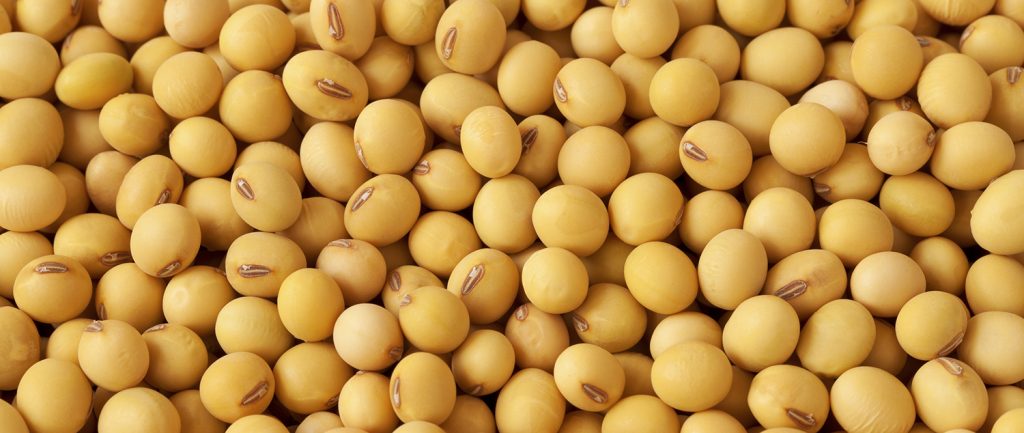Many farm operators are patiently waiting for the prolonged winter weather to improve so they can begin to focus on spring planting for the 2018 crop year. However, in the last couple of weeks a more pressing matter to the future of many farm operations is what’s happening with the increasing rhetoric and threats surrounding potential tariffs on goods and services that are traded between the United States and China. Most items that the U.S. imports from China that would be affected by the added tariffs are not related to agriculture; however, the tariffs that China would impose on imports from the U.S. are largely related to agricultural products.
In late March, President Trump announced tariffs on approximately $60 billion worth of Chinese products currently being imported into the U.S. citing a negative trade balance and “China’s theft of U.S. intellectual property” as the primary reason. Included on the initial list of products were tariffs on Chinese steel and aluminum coming into the US China responded with a list of 128 US products that would face tariffs when being imported into China. This included a 25 percent tariff increase on US pork products, and a 15 percent tariff increase on fresh fruit, dried fruit and nuts, wine, steel pipes and other products originating from the U.S.
This initial action was followed by further trade tensions between the U.S. and China in the first week of April, with President Trump calling for additional tariffs on Chinese goods and services entering the U.S. China then responded by threatening to impose a 25 percent tariff increase on a wide range of U.S. agricultural products that are imported by China, including soybeans, corn, sorghum, wheat, cotton, beef, and other ag products. President Trump then responded by asking for consideration of an additional $100 billion in tariffs on Chinese products entering the U.S. While most global ag trade experts say it is too early to label this situation as a “trade war”, the escalating threats and potential retaliations between China and the U.S. are certainly a major concern in both countries.
The U.S. agriculture industry is particularly concerned with the economic impacts of continued trade tensions with China, especially crop and livestock producers in the Midwest. While the U.S. has a large overall trade deficit with China and other countries, trade on agricultural products is one area where the U.S. has a trade surplus. For the past few decades, China has had a rapidly growing economy, and financial conditions for mainstream residents has improved over time. As that has occurred, the Chinese people have changed their diets eating more protein, which has resulted in China importing more agricultural products from the U.S. and other countries.
The potential Chinese tariff on U.S. soybeans could have one of the biggest financial impacts on U.S. farmers. Currently, the U.S. exports about half of the annual soybean production, with China accounting for about 60 percent of the total U.S. soybean exports. Nearly one-third of annual U.S. soybean production is exported to China, with those exports totaling nearly $14 billion in 2017. China also accounts for about 80 percent of U.S. sorghum exports, as well as smaller amounts of corn and wheat. China does import some ethanol and DDG’s from the U.S., which could be affected by the added tariffs.
After the Chinese announcement regarding the potential added soybean tariffs, soybean futures on the Chicago Board of Trade were down over 50 cents per bushel, but prices have stabilized since the initial announcement of he added tariffs. Soybean producers worry about the potential market price impacts if China were to actually implement the proposed additional 25 percent tariff on U.S. soybeans.
Some grain trading experts point out that the timing of these threats toward U.S. soybean imports into China are favorable to the Chinese, because China usually imports a higher percentage of soybeans from South America during the spring and summer months. Soybean imports from the U.S. into China usually increase in the fall, when the U.S. soybean harvest occurs. Most of the soybeans imported into China are processed into soybean meal, which is fed to livestock. Many experts do not feel that China can source enough soybeans from South America and other parts of the world to meet their annual demand for soybeans without importing some U.S. soybeans.
USDA is currently estimating soybean ending stocks at the end of the 2017-18 marketing year to be over 500 million bushels, which would be at the highest level in over a decade. Any significant reduction in soybean exports to China in the next year would likely cause those carryover estimates to increase, which would put more pressure on soybean market prices. Of course, the level of planted soybean acres in the U.S. in 2018, along with the national average yield this year, will also impact the soybean supply and ending carryover level.
According to the National Pork Producers Council, China was the third highest export destination for U.S. pork, trailing only Canada and Mexico. U.S. pork exports to China totaled approximately $1.1 billion in 2017; however, U.S. pork exports to China have been declining in recent years, due to China’s increased domestic hog production, and more Chinese pork imports from the European Union. Hog prices have declined since the announcement of the additional Chinese tariffs on U.S. pork; however, the downturn in recent weeks has also been caused by rising hog numbers and increased pork supplies in the U.S.
What is frustrating for many farm operators is that soybean production has been more profitable than raising corn in the past couple of years, and soybeans are projected to be more profitable again in 2018. According to farm business management data for Western and Southern Minnesota, soybeans showed an average profit of $28.11 per acre in 2017 and $84.82 per acre in 2016, as compared to negative average profit margins for corn of ($36.75) per acre in 2017 and ($55.36) per acre in 2016. Hog producers also showed positive profit margins in 2017 and 2016. According to the farm management data, combination crop and hog farms had the highest average net farm income level in 2017.
A full-fledged “trade war” between the U.S. and China would likely have a serious economic impact on both countries. Farm operators, agricultural suppliers, and rural communities in the Midwest would likely be especially hard-hit economically by a “trade-war” with China. Fortunately, thus far it has mainly been threats, and trade negotiations between the two countries are continuing. The agriculture industry is hoping that a workable agreement can be reached before the situation escalates further into a “trade war” with China.





